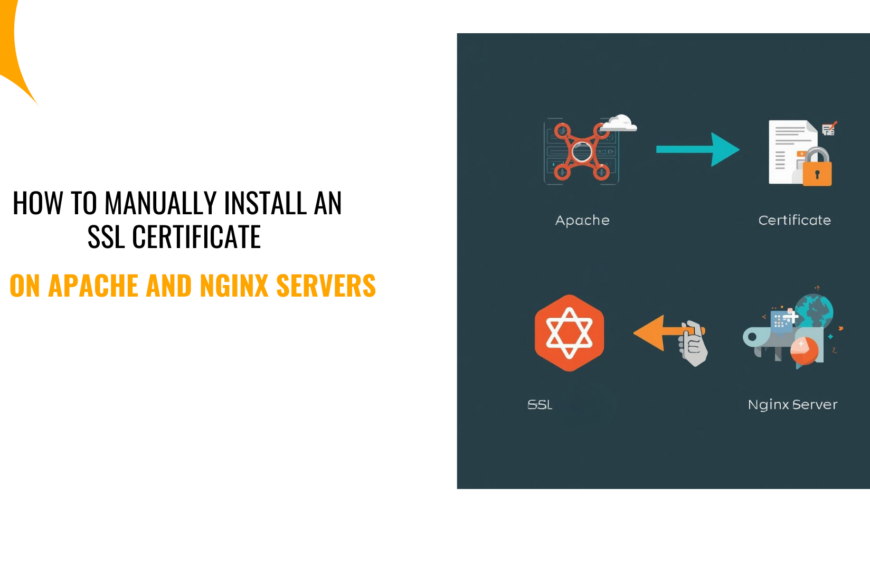Are you struggling to write an engaging blog post in India?
Do you constantly feel short on time and are unable to come up with quality content?
Don’t worry. You are not alone.
You see, writing a blog post can be daunting, leave alone an engaging one?!
Now couple that with the fast-paced lifestyle in India, it can be especially challenging to find the time to create quality content.
But don’t worry; with the right tips and tricks, you can write an engaging blog post in India quickly and easily.
In this blog post, we will explore how to quickly write an engaging blog post in India so that you can get your content out there faster.
What is a Blog Post?
Before we go further, what are we even talking about?
I assume you already know what a blog is… A blog post is a piece of writing or a short article usually posted on a blog.
It is usually written in a conversational style and contains information about a particular topic or issue.
Remember how a blog can be used to share your thoughts?
Well, a blog post carries those thoughts, discusses current events, or offers advice.
Why Engaging Blog Posts?
To make this clear, see these statistics.
- The estimated global number of blogs is over 572 million.
- Around 7 million blog posts are published per day.
- Blog posts with high emotional value have a 1000x greater chance of being shared.
Yes, that’s right, everyone and their grandma are starting a blog in India and producing content daily.
That means a mediocre blog post won’t cut it.
With millions of content produced daily, it will be hard to get noticed. And that’s where an engaging blog post comes in.
It helps you stand out.
Besides that, here are other benefits of crafting engaging content in India.
- Improve search engine rankings: Well-written and informative blog posts optimized for search engines can improve your website’s ranking in search results, resulting in more organic traffic.
- Increase traffic and leads: Engaging blog posts can attract more visitors to your website, leading to increased traffic and more leads.
- Greater credibility and trust: By consistently producing high-quality content, you can establish yourself as an authority in your field and build credibility and trust with your audience. And the opposite is true as well. If you are constantly producing sub-par content, no one’s going to take you seriously next time.
- Improve brand awareness: Sharing your blog posts on social media, and other platforms can help increase brand awareness and reach a wider audience.
- Better customer relationships: Blogging in India allows you to connect with your audience and build relationships with potential and current customers. Regularly publishing engaging content can keep your audience engaged and coming back for more.
- Increased revenue: Using your blog to showcase your products or services can drive sales and increase revenue. You can also monetize your blog through advertising and sponsored content.
With that in mind, you can clearly see why writing isn’t just about beating around the bush.
You need to keep your readers glued to your posts from the introduction to the end.
Well, it is one thing to know. The other part is doing it.
So now, let’s look at how you can create a blog post in India that will get more eyeballs and put more money in your pockets.
Step 1: Preparing to Write
Before you start writing your blog post in India, you must prepare.
Brainstorm Blog Topics
Brainstorming is the process of generating ideas for blog posts that you can write.
And a crucial step in the blogging process because it helps you identify the topics that will be most interesting and relevant to your readers.
To begin brainstorming, start by thinking about your audience and what they might be interested in reading about.
Consider their needs, interests, and challenges, and try to develop topics that will address these issues in a meaningful way.
You can also look at current trends and hot topics in your industry or niche to see what people are talking about and what they might be interested in learning more about.
- Keep a list of ideas: Keep a running list of blog posts you can refer to when you’re ready to write. This could be a physical or digital list, whichever works best for you.
- Use prompts: You can use many prompts and exercises to help generate ideas for blog posts. For example, try writing down 10 things you’re passionate about or 10 questions your audience might have.
- Look at your own experiences: Your personal experiences can be a great source of inspiration for blog topics. Think about challenges you’ve faced or lessons you’ve learned that could be helpful to your audience.
- Use keyword research: Keyword research can help you identify the most popular and relevant topics for your audience. Use tools like Google’s Keyword Planner to see what people are searching for in your industry.
- Ask for feedback: Ask your readers or followers what they’d like to read about. This can be a great way to get ideas for blog topics that are directly relevant to your audience.
Remember, thinking creatively and considering your audience’s needs and interests is the key to brainstorming blog topics.
Do this and develop a list of topics that will engage and inspire your readers.
Related: How To Find Hot Topics For Blogging In India
Researching Your Topic
Yes, that’s correct!
Once you have a list of potential blog topics, the next step is researching the topic to gather more information and better understand the subject.
Again, this is an essential step because it helps you create a well-rounded and informative blog post in India that is accurate and valuable to your readers.
- Start with reputable sources: Look for reliable and trustworthy information sources. This could include academic journals, government websites, and industry experts.
- Take notes: As you research, take notes on the key points and ideas you come across. This will help you organize your thoughts and keep track of essential information.
- Verify the accuracy of your sources: Make sure that the information you’re using is accurate and up-to-date. Double-check your sources and consider the credibility of the author or organization.
- Use multiple sources: Don’t rely on just one source for your information. Look at multiple sources to get a well-rounded understanding of the topic.
- Keep an open mind: Be open to learning new things and considering different perspectives. This will help you create a more balanced and unbiased blog post.
You can do all this on Google.
Identifying Your Target Audience
Once you’ve done your research, identify your target audience.
Remember, people are drawn to things they can resonate with. As such, knowing who you are targeting with the blog post helps you tailor your content to your readers’ specific needs and interests.
This is the only way to create something more relevant, engaging, and effective.
So, to identify your target audience, consider the following factors:
- Demographics: Look at characteristics such as age, gender, location, and income level to understand your audience.
- Interests: Consider what your audience is interested in and how your blog can meet those interests.
- Needs: Think about the needs and challenges your audience is facing and how your blog can help address those needs.
- Goals: Consider what your audience is trying to achieve and how your blog can help them achieve those goals.
- Behavior: Look at how your audience consumes content and what they prefer. This can help you understand the best ways to reach and engage with them.
Making an Outline
By now, you know what to write about, what to write, and who to target.
The next step to writing a blog post in India is creating an outline.
An outline is essentially a roadmap for your blog post, and it can help you stay on track as you write and ensure that your post flows smoothly and makes sense to your readers.
It is how you organize your thoughts and structure your content logically and coherently.
To create an outline for your blog post, start by identifying the main points you want to make and the supporting information that will help you make those points.
Then, organize these points and ideas into a logical structure, using headings and subheadings to break up your content into sections.
Here are some tips for creating an outline for your blog post in India:
- Start with a clear introduction: Your introduction should provide an overview of the main points you’ll be making in your blog post and give your readers a sense of what they can expect.
- Use headings and subheadings: Use headings and subheadings to break up your content into sections and make it easier for readers to scan and navigate your post.
- Organize your points logically: Arrange your points in a logical order that makes sense to your readers. This could be chronological from most important to least important or by cause and effect.
- Include supporting information: Use examples, data, quotes, and other supporting information to help illustrate your points and make them more convincing.
- End with a clear conclusion: Summarize your main points and provide any final thoughts or recommendations in your conclusion.
An outline can make the writing process more efficient and ensure that your blog post is well-organized and easy to follow.
Step 2: Writing Your Blog Post in India
Once you’ve prepared, it is time to sit down and start writing your blog post in India.
Create a Captivating Title
The title of your blog post plays a crucial role in attracting readers and getting them to click on your post.
A good title should be catchy, descriptive, and accurately reflect the content of your post. It should also include relevant keywords to help your post rank higher in search engines.
Here are some tips for writing a captivating title for your blog post:
- Keep it short and sweet: A title that is too long or confusing can turn readers off. Aim for a title that is short and to the point while still accurately conveying the content of your post.
- Use strong keywords: Including relevant keywords in your title can help your post rank higher in search results and make it more likely that people will find your post.
- Make it catchy: A catchy title can grab readers’ attention and encourage them to click on your post. Use action verbs and strong language to create a sense of urgency or excitement.
- Be descriptive: A title that accurately describes the content of your post will give readers a clear idea of what they can expect to read about and help them decide if they’re interested in reading your post.
Here are a few examples of captivating blog post titles:
- “10 Surprising Ways to Boost Your Productivity”
- “The Ultimate Guide to Planning the Perfect Vacation”
- “5 Simple Steps to Overcoming Procrastination”
- “The Top 10 Trends in Social Media Marketing for 2021”
According to Orbit Media, 91% of bloggers write only a few headline drafts (around six) before publishing.
Want more?
- “Very long” headlines (14-17 words) outperform short headlines by 76.7% in terms of social sharing (Backlinko).
- Headlines with a question mark get 23.3% more social shares than non-question headlines (Backlinko).
Writing the Introduction
After the title, this is your other chance to make a good first impression.
Introductions should be interesting and engaging, and they should provide a brief overview of what your post will be about.
- Start with a hook: An attention-grabbing opening can help draw readers in and make them want to keep reading. You could use a statistic, a question, a quote, or a provocative statement to get your readers’ attention.
- Provide context: Give your readers some context for your post, such as the background or purpose of your topic. This will help them understand what your post is about and why it’s relevant to them.
- Set the tone: Use the tone of your introduction to set the tone for the rest of your post. If your post is serious, use a more formal tone. If it is more lighthearted, you can use a more casual tone.
- Preview the main points: Provide a brief overview of the main points you’ll be making in your post. This will give readers a sense of what they can expect to read about and encourage them to keep reading.
You can use several formulas to help structure your blog post introduction and make it more engaging and effective. Here are some worth trying:
- The “Problem/Agitation” formula: This formula involves starting with a problem that your readers are facing and then agitating that problem to create a sense of urgency. For example: “Are you tired of feeling overwhelmed and stressed out? It’s time to take control of your life and start living your best life.”
- The “News” formula: This formula involves starting with news or a current event that is relevant to your topic. For example: “In a recent study, researchers found that people who engage in daily meditation are more productive and have lower levels of stress.”
- The “Surprising Statistic” formula: This formula involves starting with a surprising statistic or fact that is relevant to your topic. For example: “Did you know that the average person spends over 4 hours a day on their smartphone? That’s a lot of time that could be spent on other activities!”
These formulas work like a charm!
Remember, the goal of an introduction is to get the reader hooked to the end.
Crafting the Body of the Post
It is time to walk the talk.
In your introduction, you promised something to the reader; this is your chance to deliver.
Luckily, you have an outline. So walk down your outline, weaving every part and delivering value in each paragraph.
Think of your outline as the skeleton. The body is where you add the meat!
- Use headings and subheadings: Break up your content into sections using headings and subheadings. This will help make your post easier to scan and navigate and help you organize your thoughts and structure your content more effectively.
- Use supporting information: Use examples, data, quotes, and other supporting information to illustrate your points and make them more convincing.
- Use images and other media: Incorporating images, videos, and other media can help make your post more engaging and visually appealing.
- Use transitional phrases: Use transitional phrases and sentences to help your post flow smoothly and make it easier for readers to follow your train of thought.
- Keep it concise: Avoid rambling or going off on tangents. Instead, focus on making your points clearly and concisely.
Choosing the Right Images and Videos
A picture is worth 1000 words.
Adding images and videos to your post can help make it more visually appealing and engaging.
But don’t pull up any images from Google!
Choose images and videos that are relevant to your post, and that will help illustrate your points.
Here’s something you need to know.
Using any image can get you in trouble or even behind bars. Many websites offer copyright-free images that you can use in your blog post. Here are a few options you can use in India:
- Pexels: Pexels is a website that offers a wide selection of high-quality, royalty-free images that you can use for free in your blog post.
- Unsplash: Unsplash is another website offering a large collection of free, high-resolution images you can use for your blog post in India.
- Pixabay: Pixabay is a website that offers a variety of copyright-free images, including photos, vectors, and illustrations that you can use in your blog post.
- StockSnap: StockSnap is a website offering a collection of free, high-resolution images you can use for your blog post.
- Canva: Canva is a design platform that offers a selection of free, royalty-free images you can use in your blog post.
As much as they are free, always check the terms of use for the images you use to ensure you are using them legally and in accordance with the copyright owner’s rules.
Crafting an Effective Call to Action
There’s a reason you sat down and created a blog post, right?
You had a goal in mind.
You want the readers to do something after reading.
What is it?
You must encourage your readers to take action after you finish writing. This could be anything from signing up for your newsletter to sharing your post on social media.
That’s where a call to action comes in.
A CTA, as its commonly known, is a statement or button that encourages your readers to take a specific action, such as signing up for a newsletter, downloading a resource, or making a purchase.
Having this in a blog post can help you achieve your goals and drive more conversions.
Here are a few examples of CTAs that you can use in your blog post in India:
- “Sign up for our newsletter to get the latest updates and exclusive content.”
- “Download our free resource guide to learn more about [topic].”
- “Join our community and get access to exclusive content and resources.”
- “Buy now and get [benefit] with your purchase.”
- “Book a consultation with one of our experts and get personalized advice on [topic].”
Remember to make your CTA actionable, relevant, and compelling and to place it in a prominent location in your blog post.
Step 3: Editing and Proofreading
You are almost there.
Once you’ve finished writing your post, go back and edit and proofread it.
Correct! Proofreading and editing are important steps in the writing process.
They help you ensure that your blog post is clear, concise, and free of errors.
Do the following:
- Take a break: It’s difficult to catch errors when you’re too close to your writing. Take a break and come back to your post with fresh eyes.
- Read your post out loud: Reading your post out loud can help you catch errors and awkward phrasing that you might not notice when reading silently.
- Use spelling and grammar check: Tools like Microsoft Word or Grammarly can help you catch spelling and grammar mistakes.
- Use the “find” function: Use the “find” function to search for common errors, such as “it’s” vs. “its” or “their” vs. “there.”
- Get a second opinion: Ask a friend or colleague to proofread your post. A fresh set of eyes can often catch errors you might have missed.
NOTE: The goal of proofreading and editing is to make your writing as clear and error-free as possible.
It takes time and effort, but producing a high-quality blog post is worth it.
Then there’s grammar?♀️.
Since English is not our first language, we must catch any slip-ups.
That’s where a tool like Grammarly can help.
Grammarly is a popular grammar-checking tool that can be used as a standalone app or as a browser extension.
Besides grammar, it also checks spelling and punctuation errors and provides suggestions for improvement.
Another option is Hemingway Editor.
It is a writing tool that helps you write more clearly and concisely. It highlights complex sentences, passive voice, and other grammar issues and provides suggestions for improvement.
Step 4: Optimizing Blog Post for Search Engines in India
The last thing you want as a blogger in India is to spend hours writing a blog post and then crickets!
If you are to achieve your goals, you need traffic.
And one of the best and free ways to get it is through search engines.
Optimizing your post for search engines is an essential step in ensuring that your post can be easily found online.
- Use relevant, descriptive keywords in your title and throughout the post. For example, if your blog post is about “how to train a puppy,” include those words in your title, first 100 words, and throughout the post. Don’t forget the URL. Include the keyword there as well.
- Use headings and subheadings to structure your content and make it easier to read. This also helps search engines understand the main topics of your post.
- Include internal and external links to add value and context to your post. Internal links are links to other pages on your website, while external links are links to other websites.
- Use alt tags to describe images. Alt tags are short descriptions of images used by search engines to understand the content of an image.
- Use a descriptive and concise meta description. The meta description summarizes your blog post that appears in search results.
Do this and help search engines understand the content of your blog post and improve its chances of ranking well in search results in India.
Related: On-Page SEO Checklist: 10 Things To Do to Improve Your Search Engine Ranking
Step 5: Publish Your Blog Post
Congrats, your article is ready.
All remaining is to publish and let the world see what a genius you are.
To publish a blog post on WordPress, follow these steps:
Log in to your WordPress dashboard.
- Click on the “Posts” tab on the left side of the dashboard.
- Click on the “Add New” button at the top of the screen.
- Enter a title for your post in the “Enter title here” field at the top of the screen.
- Write your post in the text editor below the title field. You can use formatting tools to style your text and add images, videos, and other media to your post.
- Choose a category for your post from the “Categories” box on the right side of the screen. You can also add tags to help organize your post.
- Preview your post by clicking on the “Preview” button in the top right corner of the screen.
- When you’re ready to publish your post, click on the “Publish” button on the right side of the screen. If you want to save your post as a draft or schedule it to be published later, you can use the options under the “Publish” button.
Remember that you need a WordPress account and a website to publish a blog post.
If you don’t have a website, you can create one by signing up for it by installing WordPress on a web hosting service.
Get the cheapest web hosting in India.
Conclusion
Writing engaging blog posts in India doesn’t have to be difficult.
With a bit of research, preparation, and the right strategies, you can become a successful blog writer in no time.
To recap, here are some of the key points to remember when writing an engaging blog post in India:
- Research your topic and identify your target audience
- Create an outline and craft a captivating title
- Write the introduction, body, and call to action
- Edit and proofread your post
- Optimize your post for search engines
Read also: How To Start A Blog in India And Make Money
 Web HostingBudget-friendly shared hosting plans
Web HostingBudget-friendly shared hosting plans Domains SearchFrom .com to unique country domains, explore and register extensions worldwide.
Domains SearchFrom .com to unique country domains, explore and register extensions worldwide. WordPress HostingPower your blog or business with WordPress hosting.
WordPress HostingPower your blog or business with WordPress hosting. Email HostingSimple, secure email hosting that helps you stay connected and professional.
Email HostingSimple, secure email hosting that helps you stay connected and professional. Reseller HostingStart your own hosting business with easy and reliable reseller hosting plans.
Reseller HostingStart your own hosting business with easy and reliable reseller hosting plans. AffiliateJoin our affiliate program and earn commissions every time you bring in new customers.
AffiliateJoin our affiliate program and earn commissions every time you bring in new customers. IN Domain PricesDon’t miss out on the best domain deals in India!
IN Domain PricesDon’t miss out on the best domain deals in India! WHOIS LookupFind out who owns a domain name with a quick and easy WHOIS search.
WHOIS LookupFind out who owns a domain name with a quick and easy WHOIS search. Domain TransferTransfer your domain to us and enjoy reliable support every step of the way.
Domain TransferTransfer your domain to us and enjoy reliable support every step of the way. .Com DomainGet the most trusted domain for worldwide credibility
.Com DomainGet the most trusted domain for worldwide credibility All TldsSearch and register domain extensions worldwide.
All TldsSearch and register domain extensions worldwide.







